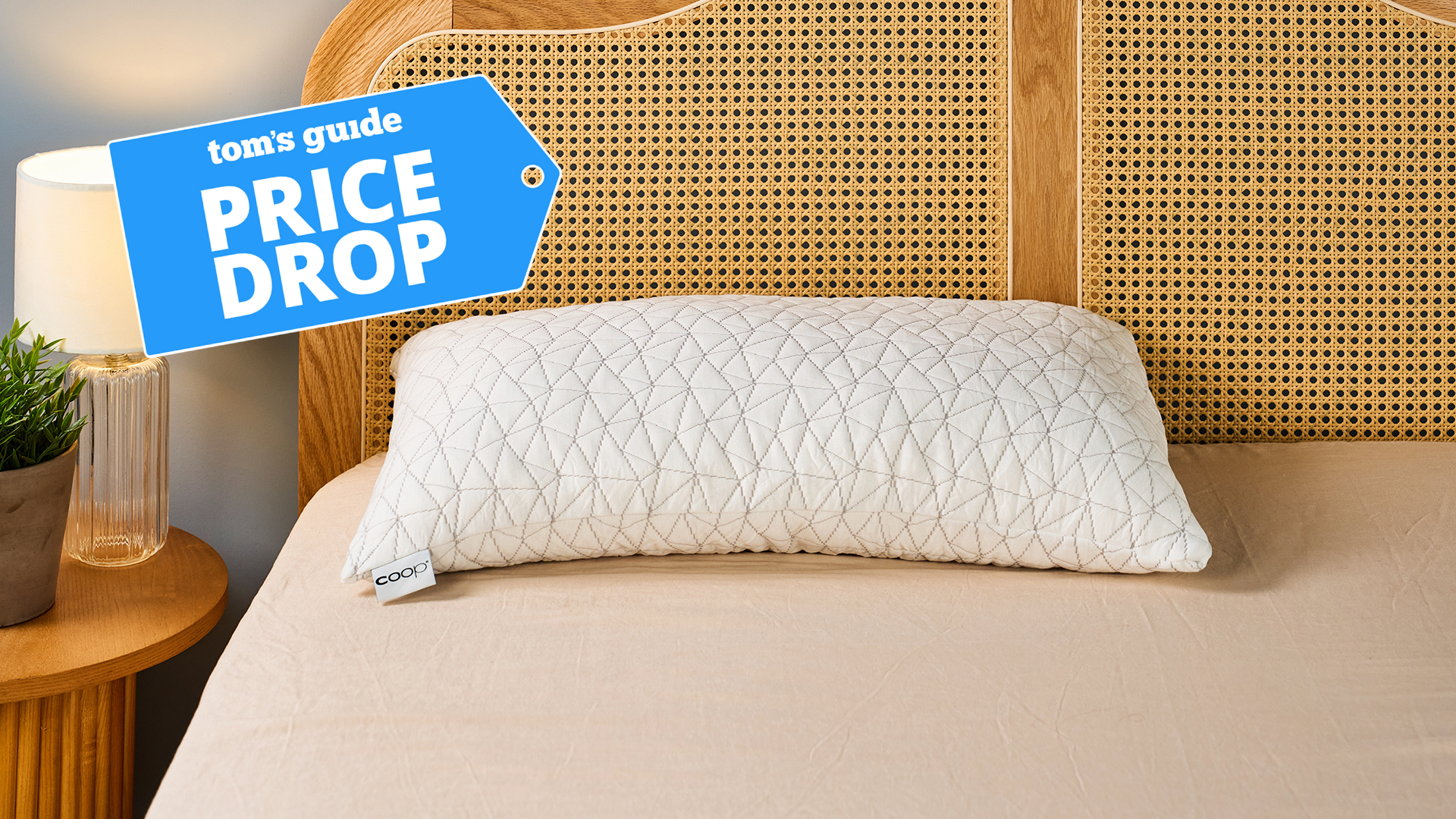How to fix a shaky washing machine
Is your washing machine shaking violently? Here’s how you can stop it
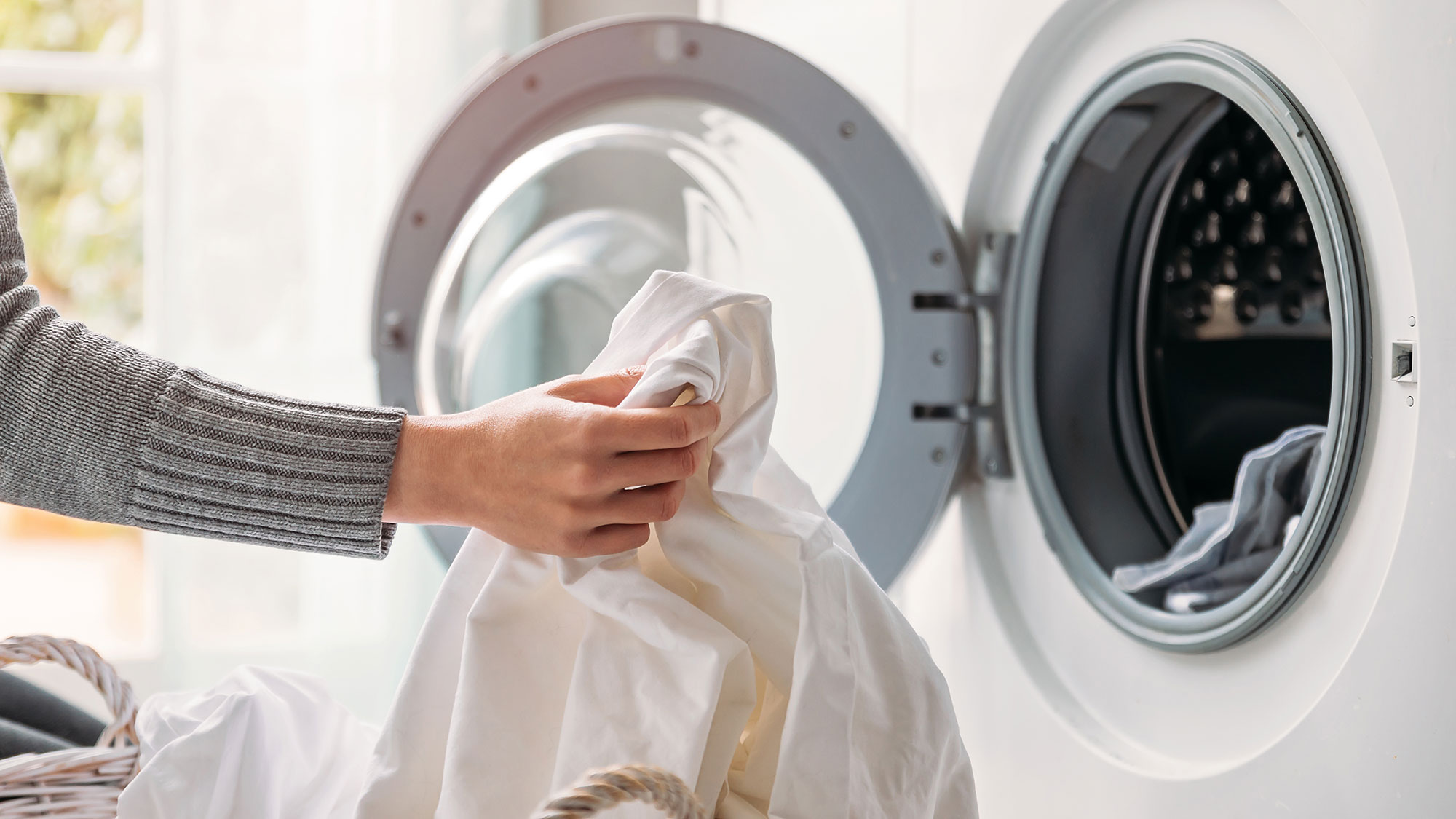
For most of us, putting on a load of laundry is an everyday task. So when it starts to shake and malfunction, it can throw us out of our normal routine and leave us with a mounting pile of dirty clothes, plus an impatient household waiting for it to be fixed.
So, to stop you from getting into a spin, with a bit of know-how, you can discover why your washing machine is shaking and how to put it right. Rather than replacing your appliance with one of the best washing machines, you can learn how to make your washer last longer, as we understand that having a reliable washing machine and one of the best clothes dryers are two of the most important household appliances that see us through our daily chores.
Why is my washing machine shaking?
1. Uneven weight distribution

If your washing machine is only shaking occasionally, this is usually caused by an uneven distribution of weight in the drum — this can happen if you’re washing one large item, such as a pillow, or if a bedsheet wraps around the load to form a large heavy ball. As the washing machine attempts to spin, the load is thrown across the drum repeatedly at speed, which is what makes the machine shake.
Some washers are smart enough to detect when the weight is causing the machine to shake and will deter the spin cycle until it is better distributed. That’s why sometimes you can open a washer’s door to find the load still sopping wet inside. However, some models will force a spin cycle, which can cause a lot of damage — both to the machine and to your floor. Once the washing machine reaches full spin speed, it tends not to shake, but when it slows down or picks up speed to spin again, that’s when you will notice it.
2. Washer is uneven

If your washing machine is constantly shaking with everyday loads, then you might be facing another issue. Sometimes, the machine itself can be uneven. If your washer is off-balance, it will shake with every cycle, particularly as it builds up to spin. You can tell if this is the source of the problem with a spirit level, or you can see if you can manually tip the machine from side-to-side with a bit of pressure. If you can rock it, it’s uneven.
3. Transit bolts aren’t removed

A shaking washing machine can also be caused by a failure to remove the transit bolts. Transit bolts are used in the transportation of washing machines to keep the drum in place. If you forget to remove these on installation, it can cause a serious racket as your washer spins and can even damage the concrete block which holds the appliance down.
4. Blocked filter
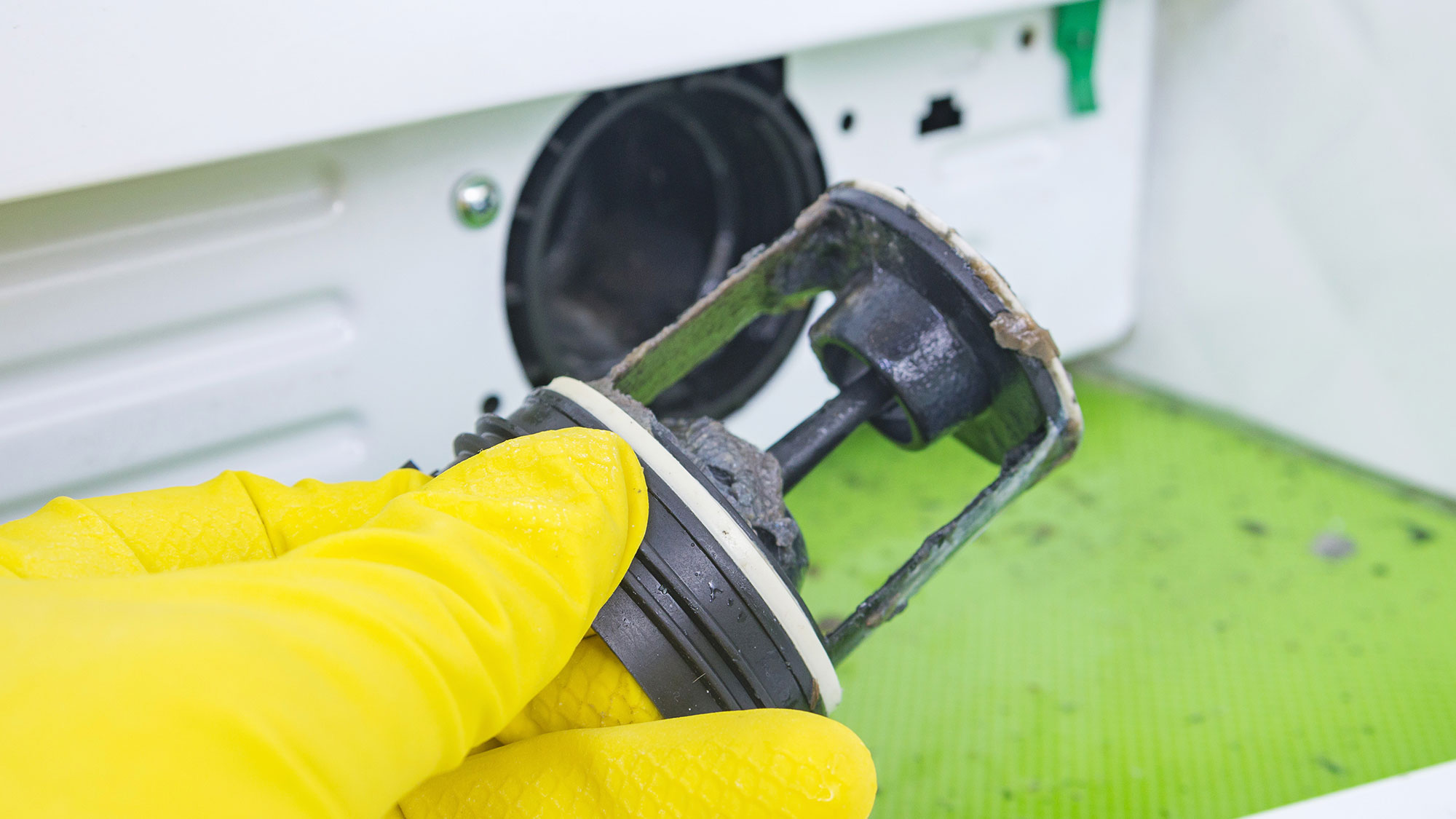
Vibration can also be caused by something as simple as a blocked filter. A washing machine’s filter is designed to catch anything which washes out of your clothes, and stops it from entering the water hose. If something metal has been caught in there, such as coins or bobby pins, be prepared for some noise throughout the cycle.
Get instant access to breaking news, the hottest reviews, great deals and helpful tips.
5. Something is broken
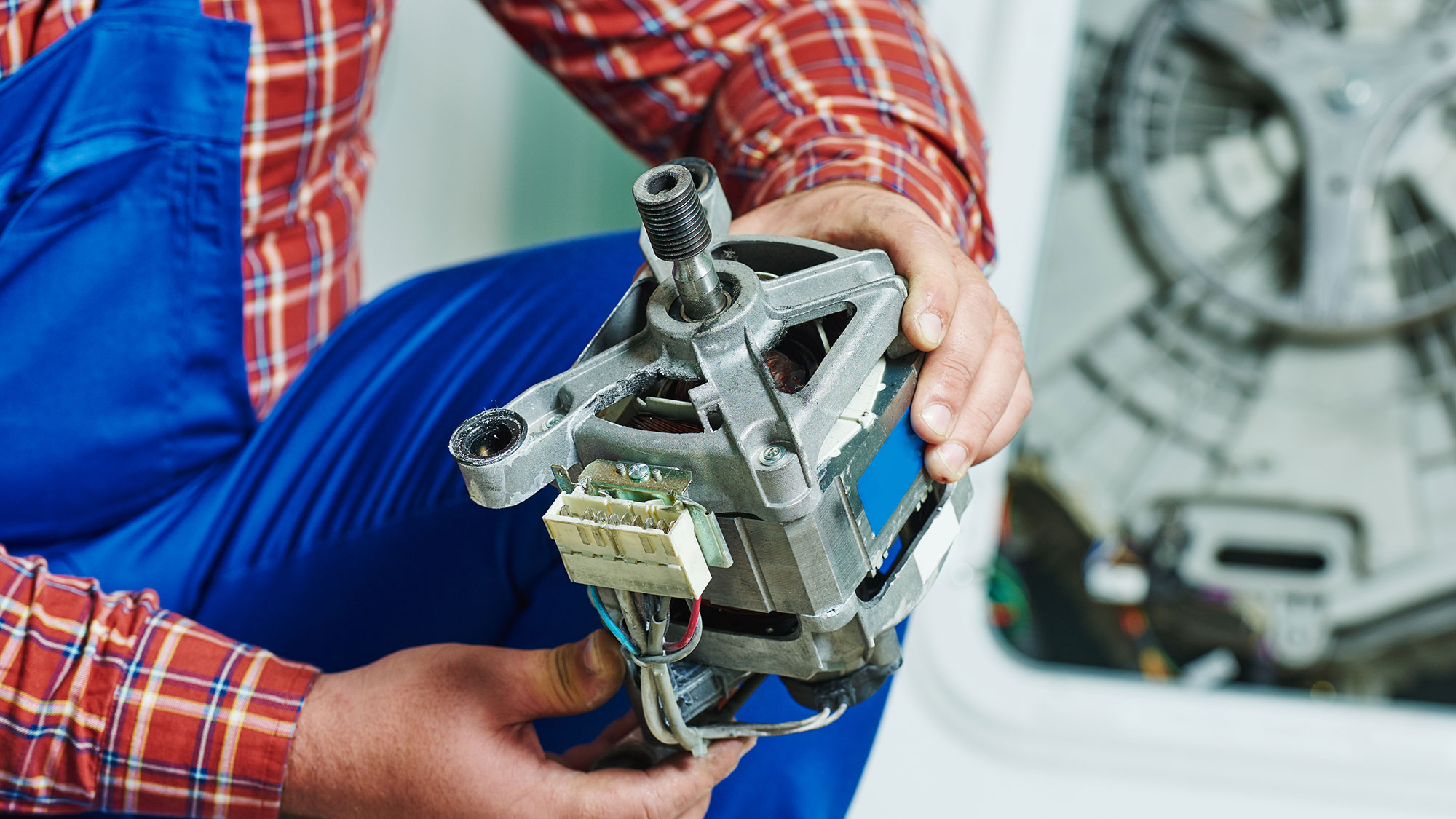
It could also be that something is damaged in your washing machine. Any number of faulty parts, from the motor, to the shock absorber, suspension rods and pads, could cause a washing machine to shake aggressively.
How can I stop my washing machine shaking?
1. Even out the load
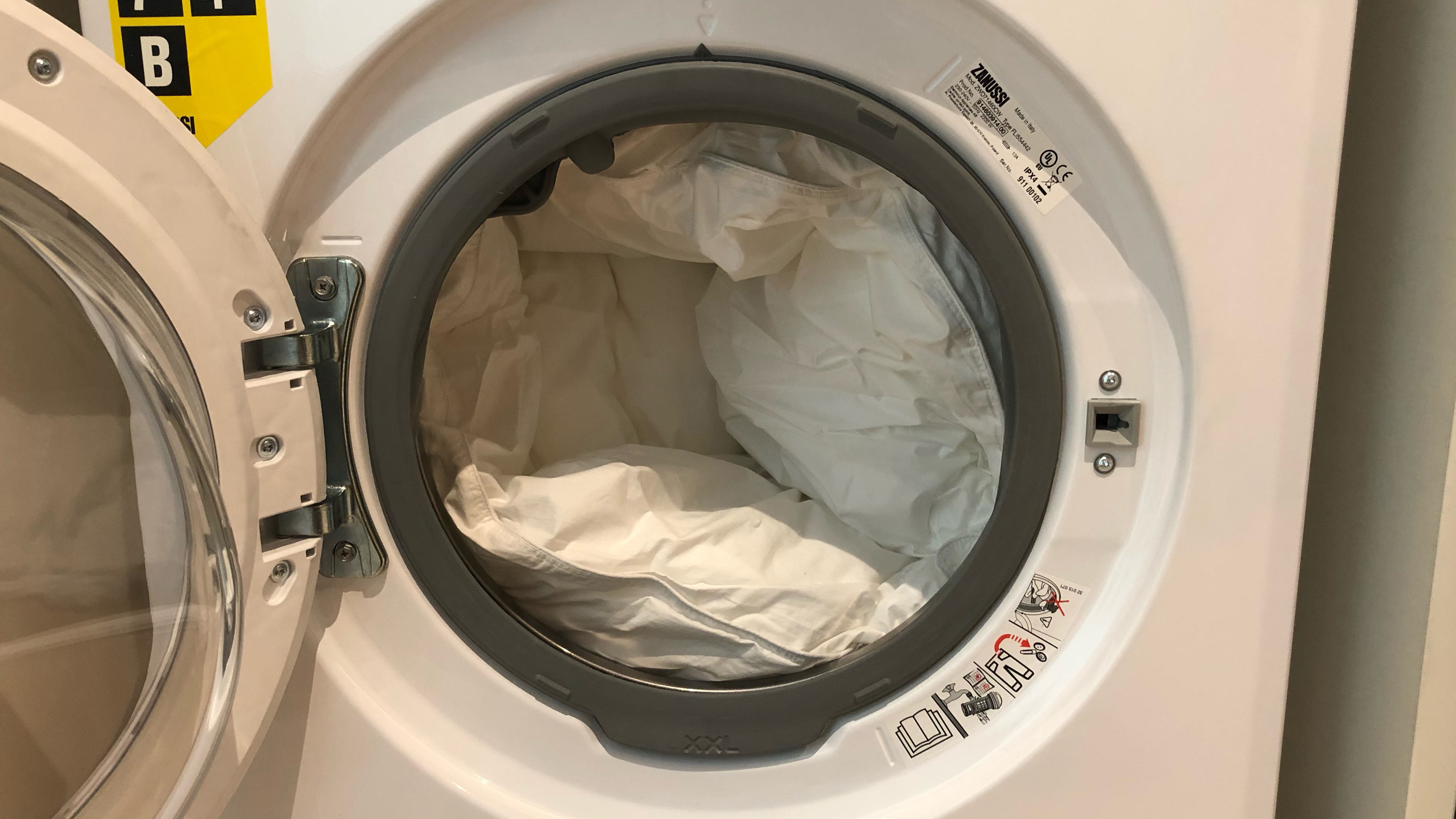
If you’re dealing with an uneven load, you simply need to even it out. If you’re trying to wash a pillow, add another pillow or some towels to bulk out the load. This will help it spin as it picks up momentum. If your washing machine has failed to spin, wring out the excess water and break up the load before returning it to the drum and running a spin-only cycle.
2. Even out the washer
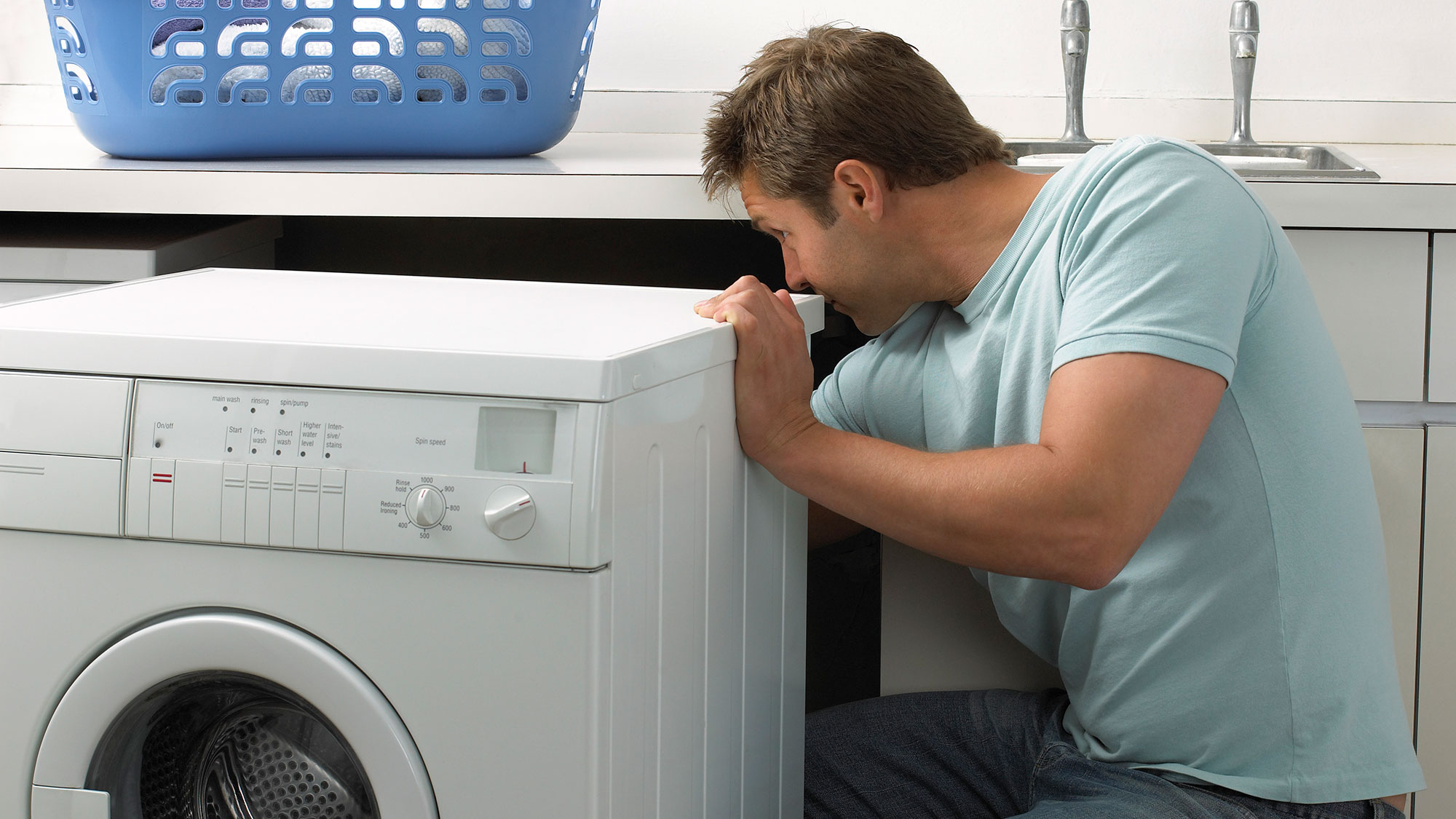
If you’ve noticed your washer is uneven, then you need to adjust the feet to balance it. Disconnect the machine, both power and water, and with two people, pull it out of its bay. First, take a look at the flooring to inspect for damage — it needs to be level and solid. Next, check to make sure the foot pads aren’t loose or damaged. These rubber pads help to reduce the vibration and can be found under the washer’s feet. If necessary, replace them.
Move the washing machine back into place and use a spirit level to check whether it’s still uneven. You can also tip it back and forth manually to check if it’s balanced. If the feet need adjusting, loosen the lock nuts on each foot using a wrench. Then, rotate the bolts clockwise to raise and counterclockwise to lower that corner. Leave the spirit level on top for reference. Once the appliance is even, tighten each of the lock nuts to secure it. Run a quick wash as a test to check that it’s now even.
3. Remove the transit bolts
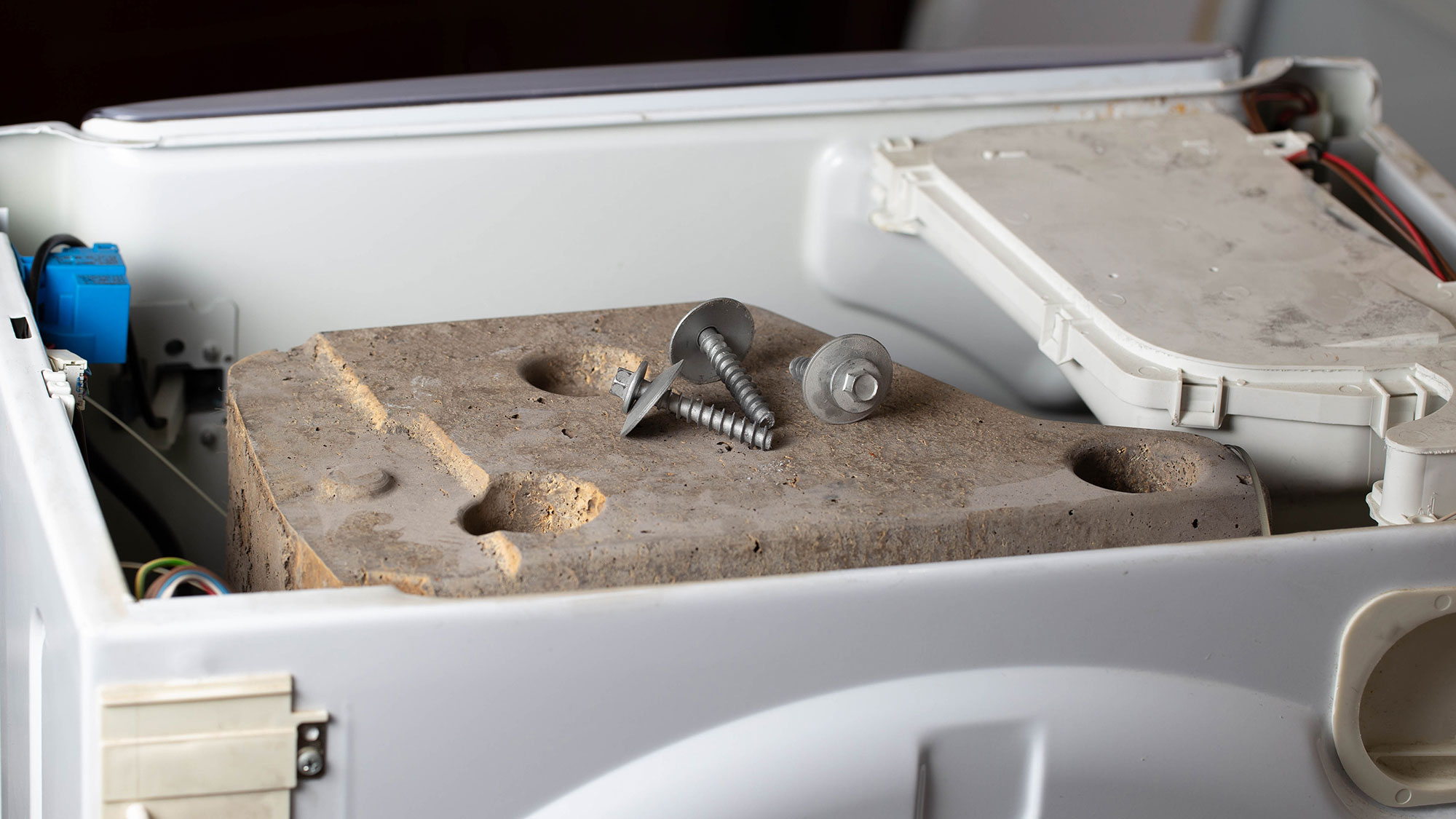
Removing transit bolts is something which should be done on installation, however if you’re in doubt that they were removed or you’re installing the appliance yourself, they’re quite easy to spot. Looking at the back of your washer, they’re the rather large bolts that surround where the outside of the drum would be. All those bolds need to be removed with a wrench before running your washer, but don’t throw them away as you will need them again if you ever want to move the appliance. Your washer may also come with plastic caps to fill the holes after. Follow your manual for full instructions.
4. Clean the filter
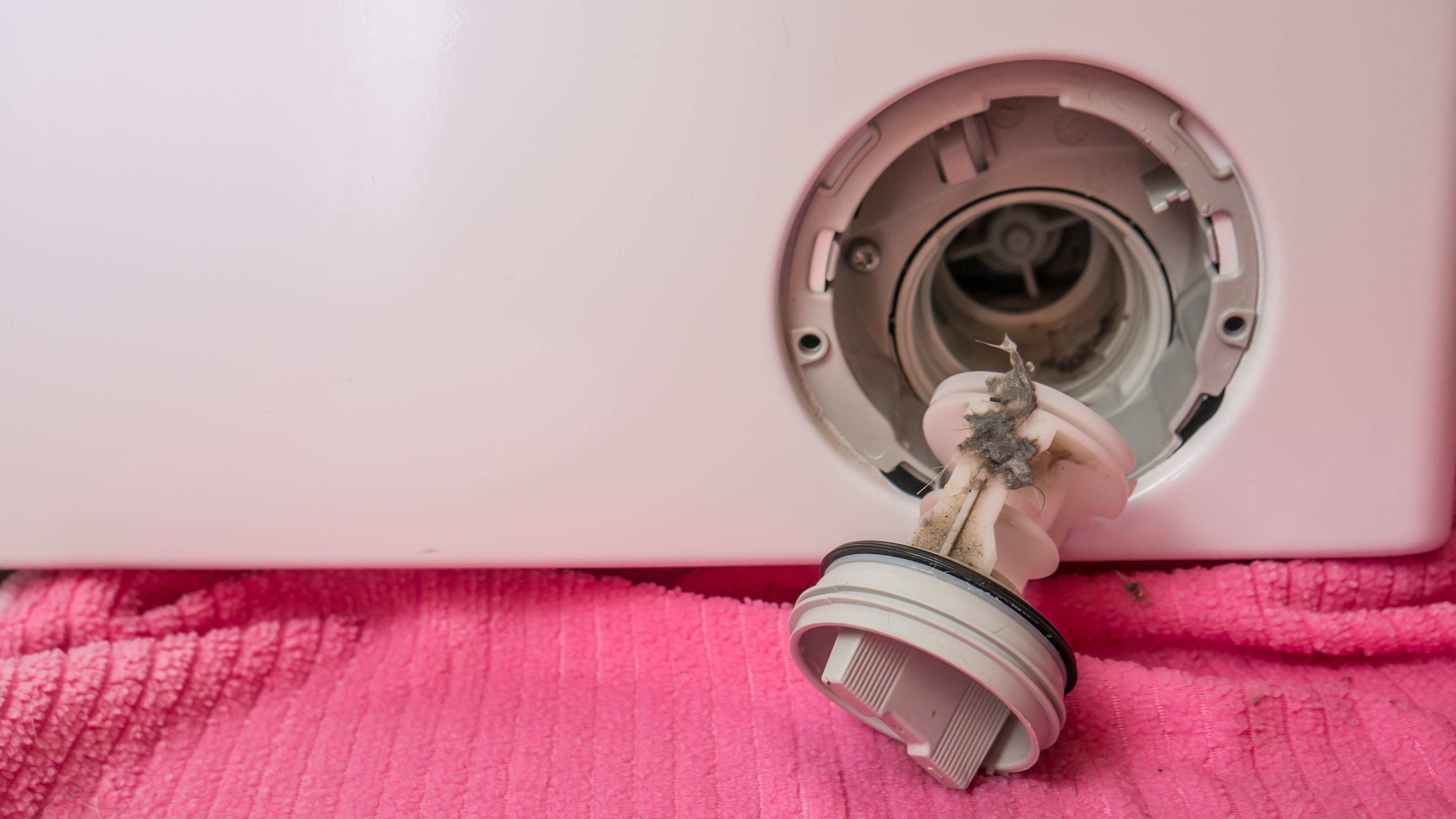
If you suspect a blocked filter, it’s quite easy to resolve. Your filter can be found behind the small panel at the base of your washer. Switch off the machine, open the panel and hold a shallow dish under the hose/dial. Loosen it slowly and drain it — this may take a few trips to the sink. Once that’s done, you can fully remove the filter to collect and wash away any debris. Check to see that no debris is left behind in the reservoir before replacing. For full details on how to clean a washing machine, check out our guide.
5. Call a professional
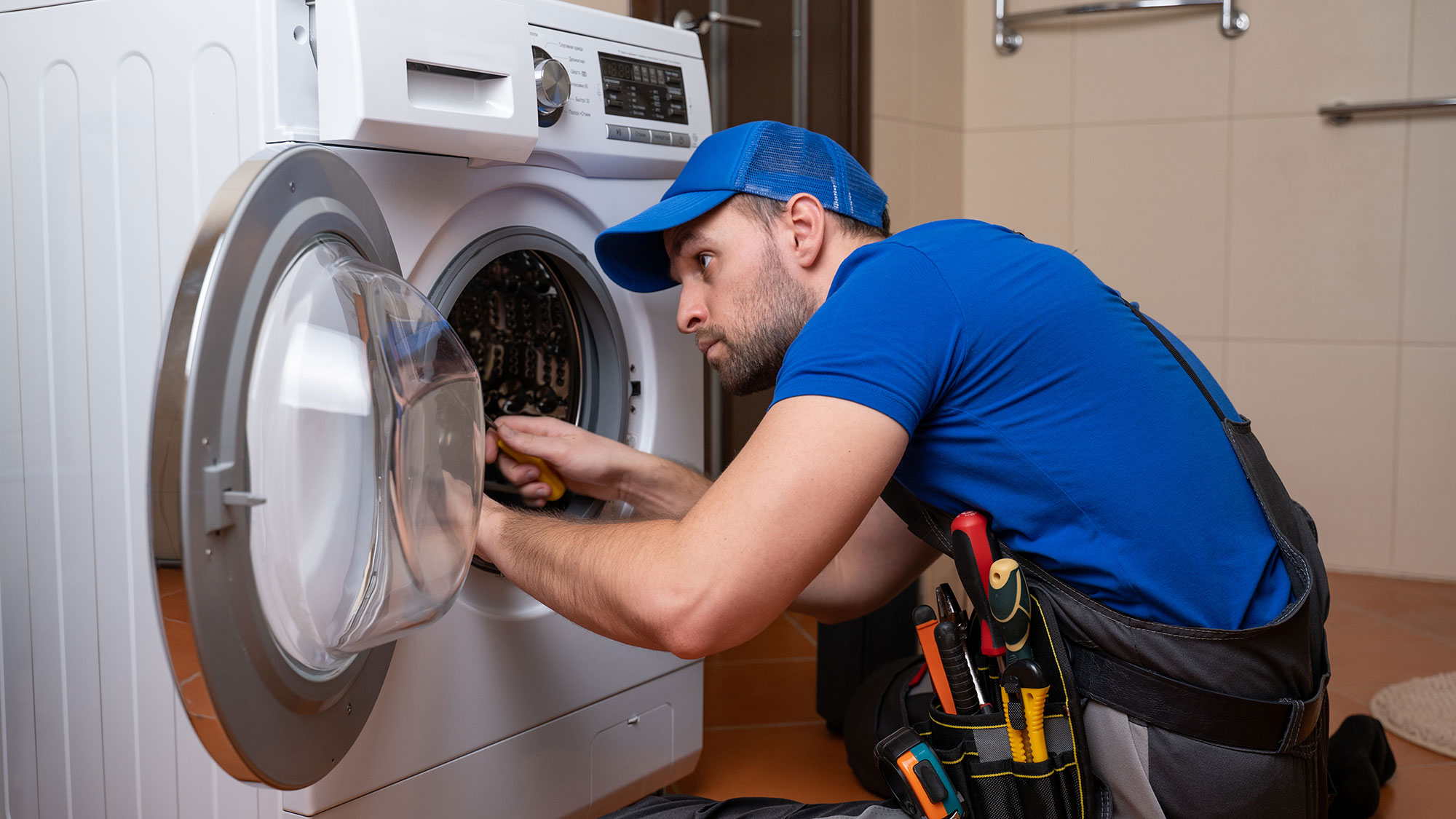
If all else fails and you think something is broken in your washer, then it’s time to call in a professional, or opt for a replacement altogether. Check if your washer is still under warranty before attempting any repairs.
For more washing tips, tricks, and how-tos, check out our guides on best clothes dryers, when you should and shouldn't use the quick wash setting and what do laundry symbols mean?

Camilla is the Homes Staff Writer and covers everything to do with homes and gardens. She has a wealth of editorial experience, mounting over 30 years, and covers news and features, tests products for reviews and compiles buying guides.
Her work has appeared in business and consumer titles, including Ideal Home, Real Homes, House Beautiful, Homebuilding & Renovation, and Kitchen & Bathroom Business. She’s even appeared on the cover of Your Home, writing about her own house renovation.
Although she’s obsessed with decorating her home, she also enjoys baking and trying out the latest kitchen appliances. But when she’s not inside, you’ll find her pottering about in her yard, tending to her vegetable patch or taking in her prized hydrangeas.
